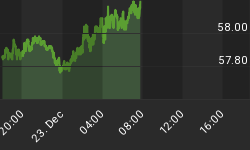At the bare minimum, well over $1 billion was at stake this weekend when authorities seized almost 10 tons of cocaine from the cargo hold of a Panama-registered ship and arrested 11 Russian sailors.
Authorities in Cape Verde, a group of islands off the west coast of Africa, said the vessel was travelling to Morocco from South America.
The bust only materialized because one of the crew members died on board the vessels and it was forced to dock at the port of Praia, where the police were tipped off about the ship’s cargo by the EU-funded Maritime Analysis and Operation Centre (MAOC)—and anti-drug group, which had been tracking the ship across the Atlantic.
According to MAOC, said the shipment this size the product would be broken into much smaller consignments very quickly after reaching Europe, so the crew member’s death was a timely one for the authorities. While that amount of cocaine sold straight up from the boat would have a market value of around $1.1 billion, by the time it was cut and distributed it would have generated many times more.
And it was only one of two big drug busts in the same week. Italian authorities also seized 2.1 tons of drugs off a boat heading from South America to Spain. According to Italian authorities, the drugs had a street value of around 500 million euros and “belonged to several drug-trafficking organizations associated with the armed group known as the ‘Gulf Clan’.” Related: Italy’s $1.7 Trillion Debt Could Threaten The EU
But the Cape Verde haul was a record, according to MAOC, which claims the biggest haul by the authorities to date has been five tons.
A year ago, the Portuguese navy seized 2.5 tons of cocaine in another MAOC-related operation. That same year, authorities in the Netherlands at the Port of Rotterdam and in Belgium at the Port of Antwerp seized more than 73 metric tons of cocaine.
Nor is it the first haul in Cape Verde—a well-known drug-trafficking venue favored by gangs bring Latin American drugs into Europe via West Africa. In 2011, authorities seized 1.5 tons of uncut cocaine heading for the European market.
This is a massive money-making business. Every year, according to the United Nation’s Office of Drugs and Crime (UNODC), at least 50 tons of South American cocaine is trafficking through West Africa every year, most of it destined for Europe. Since 2005, authorities drug interceptions have been increasing year on year.
But as with anything, when the authorities step up activities, the traffickers do, too, and Colombia—the world’s largest producer of cocaine—is going for record high production.
According to the UNODC report from last September, Colombia was growing enough coca to produce 1,400 tons of cocaine for a more than 30-percent production increase year-on-year. At the same time, the total acreage under coca cultivation was around 17 percent higher in 2017 compared to 2016, and the potential production was valued at $2.7 billion in the local market.
In 2015, global cocaine production reached 1,125 tons, according to the UNODC, and 864 tons were seized.
By Fred Dunkley for Safehaven.com
















